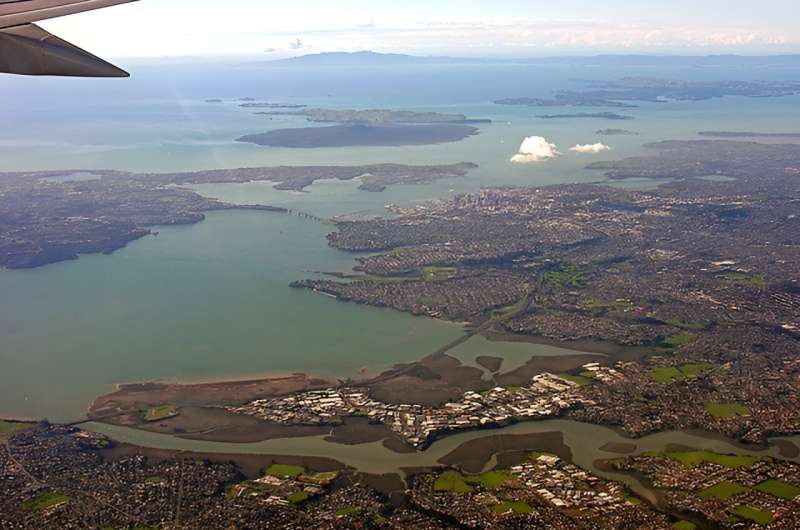This article has been reviewed according to Science X's editorial process and policies. Editors have highlighted the following attributes while ensuring the content's credibility:
fact-checked
trusted source
proofread
Unprecedented Hauraki Gulf heat waves revealed by marine lab's historic data set

A thermometer dipped in a bucket of sea water on New Year's Day in 1967 began a unique record that shows the dramatic intensification of warming in the Hauraki Gulf.
Sea-surface readings at the Leigh Marine Laboratory north of Auckland since that time indicate the "unprecedented nature of recent marine heat waves," according to Dr. Nick Shears of the University of Auckland, Waipapa Taumata Rau.
The number of marine heat wave days and their cumulative intensity has increased sharply since 2012, Shears and his co-authors write in a paper published in the New Zealand Journal of Marine and Freshwater Research.
In past decades, some years had no heat waves, but that hasn't happened since 2012.
Sponges "melting," becoming detached from rocks and dying, along with seaweed and kelp die-offs, are among temperature effects.
Especially warm autumns and winters have likely facilitated an increase in subtropical and tropical species such as the long-spined sea urchin Centrostephanus rodgersii, a voracious herbivore that can lay waste to deep reef environments.
"Obviously we need to cut emissions to slow warming, and that's a global issue, but locally we can try to make ecosystems more resilient," says Shears. "There are stressors we can manage, like fishing, or do our best to mitigate, like sediment runoff from the land."
The El Niño–Southern Oscillation (ENSO) climate phenomenon causes atmospheric and sea temperature changes over the tropical Pacific Ocean, flowing through to altered climate and weather conditions in New Zealand.
Traditionally El Niño years were associated with lower sea surface temperatures at Leigh but that didn't happen in 2023, the fourth warmest year in the record, suggesting the link could be weakening as the climate system changes.
"It seems that every year is another warm year regardless of whether it's an El Niño or not," says Shears.
The warmest year on record is 2022, which was 0.38 degrees Celsius higher than in 1999, the previous record holder. Near continuous marine heat wave conditions persisted from November 2021 to November 2022 with temperatures typically between 1 and 2 degrees Celsius above average.
Prolonged warm temperatures above 20 degrees Celsius are now sometimes continuing until May. Cooler water species like sponges aren't getting an autumn respite, benefiting warm water species that naturally occur or have arrived in recent times such as the invasive and devastating Caulerpa seaweed.
The Leigh Marine Laboratory is located at the much-loved snorkeling and diving destination of Goat Island (Te Hāwere-a-Maki), which is part of the Cape Rodney-Okakari Point marine reserve where no fishing is allowed.
Dr. Bill Ballantine, known as the father of New Zealand's marine reserves, started the practice of taking a temperature reading on the rocky shore at Leigh at 9 a.m. each day.
The resulting data, later collected automatically by electronic device, is one of the longest continuous sea-surface records in the Southern Hemisphere, adding nuance and context to satellite readings since 1982.
Co-authors of the paper were Dr. Melissa Bown of the School of Environment at the University of Auckland, and François Thoral of the University of Waikato and the National Institute of Water and Atmospheric Research.
In February, the world's ocean surface temperatures hit an all-time high. Most of the energy trapped by greenhouse gases goes into the sea. The definition of a marine heat wave is an event where temperatures exceed the 90th percentile of 30-year historic values (1983–2012) for five or more days in a row.
More information: Nick T. Shears et al, Long-term warming and record-breaking marine heatwaves in the Hauraki Gulf, northern New Zealand, New Zealand Journal of Marine and Freshwater Research (2024). DOI: 10.1080/00288330.2024.2319100
Provided by University of Auckland




















